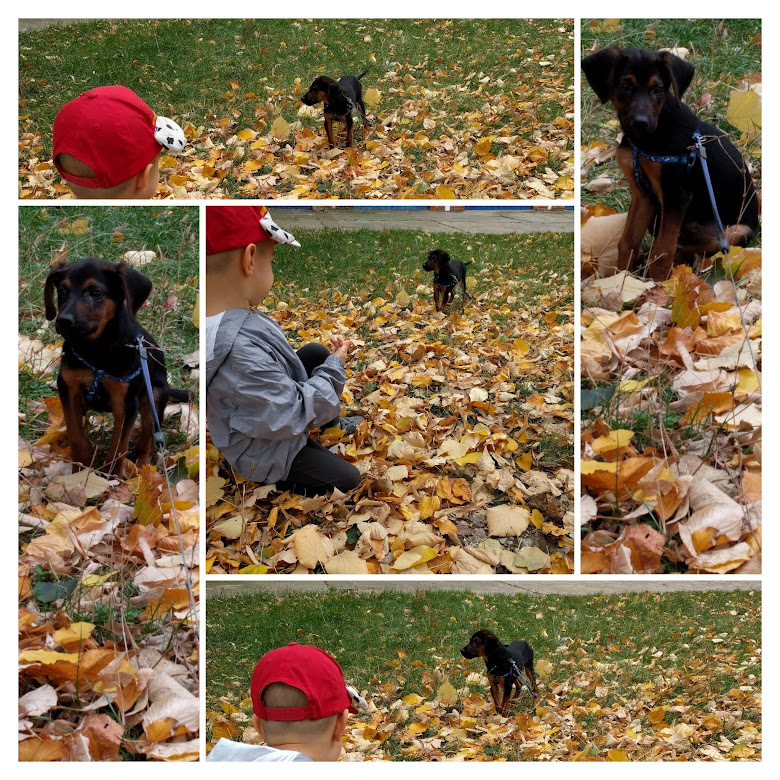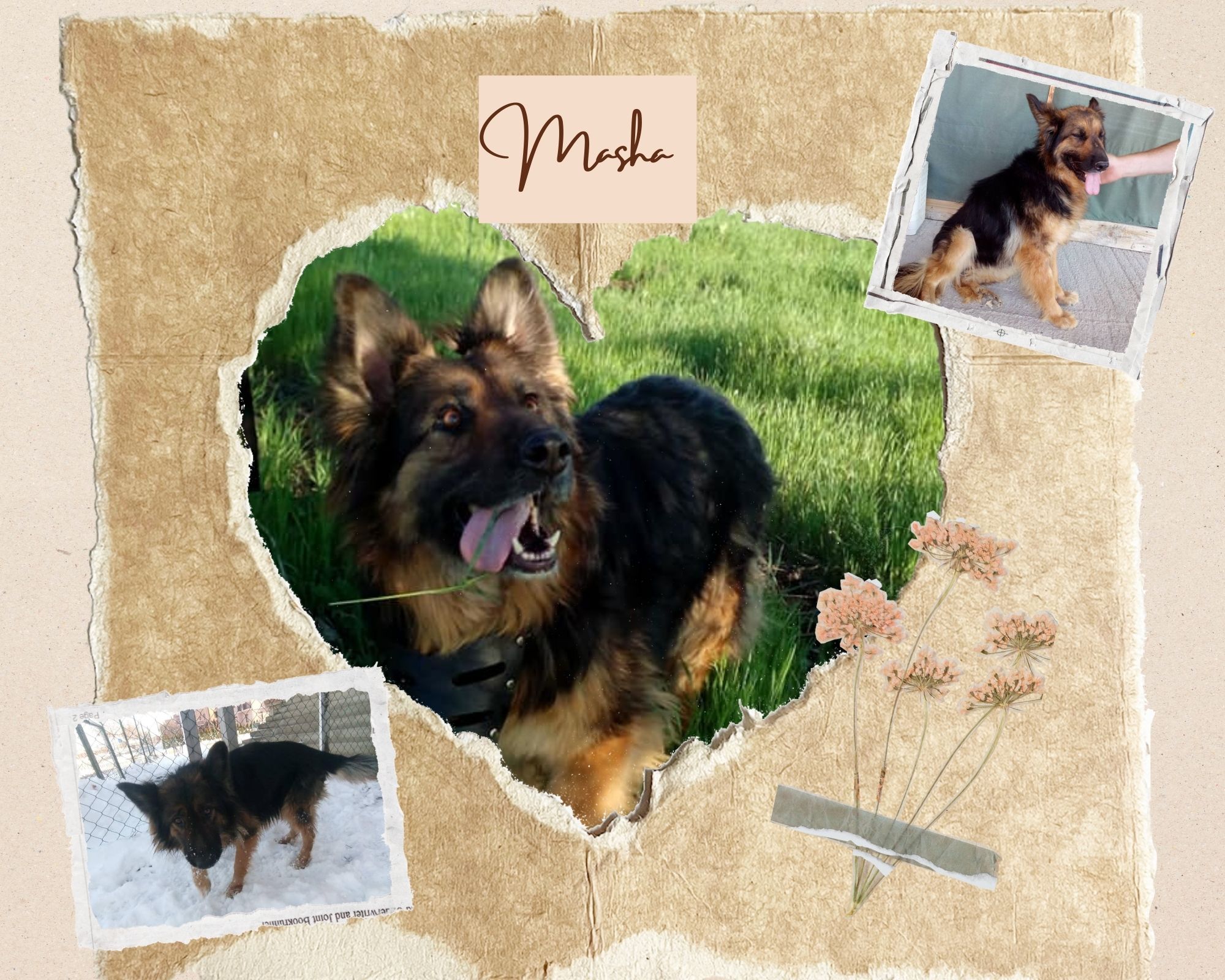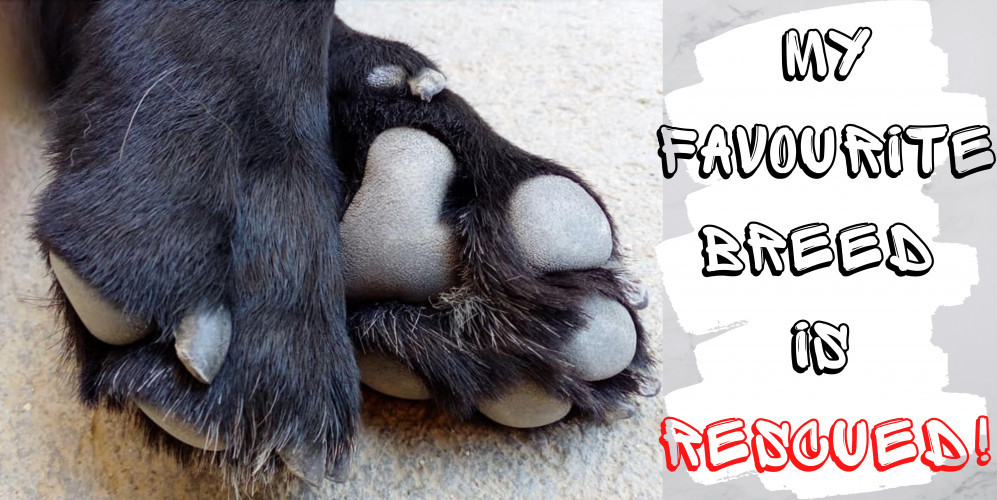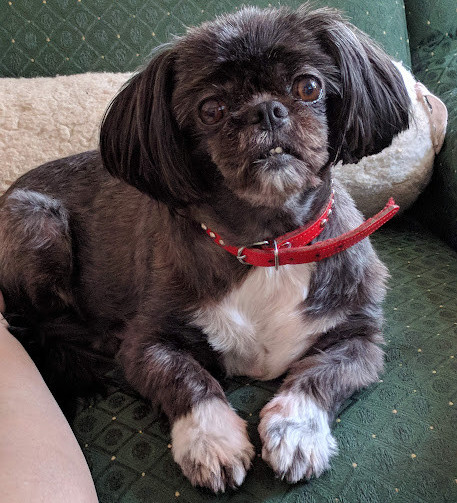Introducing a new puppy to your home is an exciting adventure, but the challenge of getting them to sleep through the night is a common concern for many pet owners.
The puppy’s boundless energy and adjustment to a new environment often lead to nighttime restlessness and occasional disruptions.
Quality sleep is not a luxury—it’s a fundamental aspect of well-being for both puppies and their owners. Adequate rest is crucial for a puppy’s physical and mental development, contributing to their overall health and vitality.
Similarly, as a pet owner, a good night’s sleep ensures you’re better equipped to provide the love, care, and attention your puppy needs during waking hours.
The quality of sleep is crucial for the entire household, including the new furry family member and their human companions, to promote a happy and healthy environment.

How to Get a Puppy to Sleep at Night?
Understanding the sleep patterns of puppies is key to addressing their nighttime needs.
Puppies, much like human infants, require more sleep than adult dogs. On average, a puppy may sleep anywhere from 15 to 20 hours a day.
However, it’s important to note that this sleep is often fragmented into short naps.
Puppies experience rapid growth and development during their early months, and sleep plays a crucial role in this process.
Their bodies and brains are actively processing new information and stimuli, thus requiring frequent periods of rest.
This heightened need for sleep means that, while your puppy may be a ball of energy during their waking moments, they’ll likely tire out quickly and need to recharge.
Recognizing and accommodating these unique sleep patterns is essential for fostering a healthy and happy puppy, setting the stage for positive sleep habits as they grow into adult dogs.
Establishing a consistent sleep routine is a cornerstone in helping your puppy develop healthy sleep habits.
Dogs thrive on routine and predictability, and a structured bedtime routine helps signal to your puppy that it’s time to wind down for the night.

Why a Consistent Sleep Routine is so Crucial?
Dogs, including puppies, find comfort in routine. A consistent bedtime routine creates a predictable sequence of events, signaling to your puppy that it’s time to prepare for sleep.
Knowing what to expect reduces stress for your puppy. A familiar routine before bedtime helps create a calm and secure environment, minimizing anxiety and promoting relaxation.
Over time, your puppy associates the routine activities with bedtime, making it easier for them to transition into sleep mode. This association helps in minimizing restlessness during the night.
A consistent routine provides an excellent opportunity for positive reinforcement and training. Reward your puppy for calm behavior during the bedtime routine, reinforcing the idea that nighttime is for rest.
By establishing and maintaining a consistent sleep routine, you create a conducive environment for your puppy to sleep through the night. However, you also develop positive associations with bedtime, creating a sense of security and comfort.

Creating a Comfortable Sleeping Environment
Creating a comfortable and secure sleeping area is paramount for your puppy’s well-being and their ability to sleep through the night.
A designated sleeping space provides a sense of safety and security for your puppy. It becomes their own territory where they can retreat and feel protected, contributing to overall peace of mind.
If you are in doubt whether you should let your puppy sleep in your bed, perhaps you want to check out this blog.
Designating a specific sleeping area helps in establishing boundaries. This is particularly important for puppies who may be tempted to explore and play during the night. Boundaries contribute to a structured sleep routine.
A familiar and comfortable sleeping area helps reduce anxiety in puppies. The scent and surroundings of their dedicated space offer reassurance, making it easier for them to relax and settle down for the night.
A comfortable bed promotes better quality sleep. It provides support for your puppy’s growing body and ensures they have a cozy, quiet place to rest without disruptions.
Check out my bed suggestion in this blog.
Introducing your puppy to their sleeping area is an excellent training opportunity. Positive reinforcement and rewards for settling in their designated space create positive associations with bedtime.
A quiet environment minimizes external stimuli that could disrupt your puppy’s sleep. It helps create a calm atmosphere, allowing them to settle down more easily.
Dim lighting signals to your puppy that it’s time to wind down. This mimics natural circadian rhythms and promotes relaxation, making it easier for them to transition into a restful state.
Dim light encourages the production of melatonin, a hormone associated with sleep. This helps regulate your puppy’s sleep-wake cycle and contributes to a more restful night.

Gradual Introduction to the Sleeping Area
Gradually introducing your puppy to their sleeping area is essential for creating positive associations and ensuring they feel comfortable and secure. Here are some tips to guide you through this process.
Start Slowly
Begin by allowing your puppy to explore the sleeping area during the day when they are alert and curious. Keep initial visits short to prevent overwhelming them.
Use Positive Reinforcement
Encourage your puppy to enter the sleeping area with treats, toys, or gentle praise. Associate the space with positive experiences to create a welcoming environment.
Make it Cozy
Place comfortable bedding, familiar toys, and items with your scent in the sleeping area. This helps create a cozy and inviting space that your puppy will associate with comfort.
Spend Quality Time Together
Spend time with your puppy in their sleeping area to build trust and create a safe space.
Use a Familiar Blanket or Toy
If your puppy has a favorite blanket or toy, place it in the sleeping area. Familiar scents can provide comfort and familiarity, making the area more appealing.
Be Patient
Allow your puppy to explore and accustom to the sleeping area at their own pace. Patience is key in building a positive association.
Gradual Alone Time
Once your puppy is comfortable in the area, start leaving them alone for short periods. Gradually increase the duration, reinforcing the idea that the space is a secure and independent resting place.
Positive Goodbyes and Hellos
When leaving and returning, use positive and calm tones. This helps your puppy associate departures and arrivals with positive experiences.

Establishing a Bedtime Routine
Avoiding stimulating activities close to bedtime is crucial in helping your puppy transition into a calm and restful state before sleep.
Stimulating activities can elevate your puppy’s energy levels and make it challenging for them to settle down. Avoiding these activities allows for a smoother transition to sleep.
In the wild, animals wind down as the day progresses, preparing for rest.
By avoiding stimulating activities, you mimic this natural pattern, signaling to your puppy that it’s time to wind down.
If you have electronic devices or toys that stimulate your puppy, consider limiting their use close to bedtime. These devices can contribute to heightened arousal and hinder the winding-down process.
What you can do before sleeptime is take your puppy for a short walk. It’s the opportunity for bathroom breaks and wasting excess energy.
Consistency is the key. Be consistent in your approach. Use the same commands, rewards, and positive reinforcement techniques to create a routine and reinforce positive associations.
A consistent bedtime routine is a cornerstone in fostering a positive sleep environment for puppies. It contributes to their well-being, reduces anxiety, and creates a foundation for a lifetime of healthy sleep habits.
By incorporating these activities into your puppy’s bedtime routine, you establish clear signals that it’s time to transition into a calm and restful state.

Experiment with different activities to find what works best for your puppy, and be consistent in the sequence to reinforce the association with bedtime.
Training Techniques for Sleep
Positive reinforcement for calm behavior before bedtime is a powerful tool in shaping your puppy’s nighttime habits.
Here are some techniques that have proved worth for many dogs.
As I have said earlier, you must try out different techniques with your puupy in order to find out what works best for them.
When your puppy exhibits calm behavior, offer treats and verbal praise. This creates a positive association between being calm and receiving rewards.
Use a soothing and positive tone when offering verbal praise. Reinforce the behavior with phrases like “good calm” or “nice and relaxed.”
Introduce your puppy’s favorite toys during calm moments. This not only reinforces calm behavior but also provides a positive association with bedtime.
When your puppy is calm in their sleeping area, create a soothing environment. Dim the lights, play calming music, or provide a comfortable blanket.
Dogs are highly attuned to their owners’ energy. Maintain a calm and relaxed demeanor to encourage the same in your puppy.
If your puppy whines for attention, practice ignoring the behavior. Responding to whining with attention may reinforce the behavior. Wait for a moment of quiet before offering attention.
Gradually increase the time your puppy spends alone in their sleeping area. Start with short intervals and gradually extend the duration. This helps them become accustomed to being alone.

Being Patient and Consistent
Remember, addressing nighttime whining is a gradual process, and it may take time for your puppy to adjust. Stay patient, be consistent, and observe how your puppy responds to different strategies.
If issues persist, consulting with a professional dog trainer or behaviorist may provide additional guidance tailored to your puppy’s specific needs.
Patience allows you to build trust with your puppy. Trust is the foundation of a strong bond and effective communication. When your puppy feels secure, they are more likely to engage positively in training.
Consistency in commands and expectations helps avoid confusion for your puppy. If commands or rules are inconsistent, it can lead to uncertainty, making it challenging for your puppy to understand what is expected.
Every puppy is unique, and patience allows you to adapt your training approach to your puppy’s individual needs.
Consistently observing and understanding your puppy’s responses enables you to tailor training methods for the best results.
Patience creates a positive learning experience for your puppy. When you allow them the time to understand and respond, training becomes an enjoyable and enriching activity for both you and your puppy.

Patience helps you manage frustration, both yours and your puppy’s. Training can have its challenges, and maintaining a calm and patient demeanor contributes to a positive atmosphere.
Consistency and patience contribute to long-term training success.
The habits and behaviors your puppy learns during training sessions become ingrained over time, leading to a well-behaved and well-adjusted adult dog.
Setting Realistic Expectations
Setting realistic expectations for your puppy’s progress in training is essential to ensure a positive and achievable training experience.
Puppies go through various developmental stages, and their ability to learn and retain information may vary.
Younger puppies may have shorter attention spans, while older puppies may be more capable of focusing on training tasks.
Consider your puppy’s breed characteristics. Some breeds are known for their intelligence and quick learning, while others may take more time.
Understanding your puppy’s breed traits helps set realistic expectations.
Each puppy has a unique personality. Some may be eager to please and quick learners, while others may be more independent or easily distracted.
Adjust your expectations based on your puppy’s individual temperament.
Progress in training is often gradual. Puppies may need time to understand and consistently perform a command.
Be patient and acknowledge incremental improvements, even if they are small.
Tailor your expectations to your puppy’s age. Young puppies may be focused on basic commands and socialization, while older puppies can tackle more advanced commands and behaviors.
Set realistic goals based on your puppy’s capabilities. Avoid setting expectations that are too high, as this can lead to frustration. Gradually increase the difficulty of tasks as your puppy becomes more proficient.
Training is a journey that strengthens the bond between you and your puppy. Enjoy the process and the moments of success. Celebrate your puppy’s unique personality and progress, and adapt your expectations based on their individual strengths and challenges.

Seeking Professional Advice
While our tips and suggestions aim to help you and your puppy establish a peaceful bedtime routine, every dog is unique, and individual challenges may arise.
I’m not a certified dog trainer or vet. This blog offers advice based on personal experiences, not professional expertise. For concerns about your dog, consult a qualified expert.
If you find that sleep issues persist despite your efforts, it’s crucial to seek guidance from professionals.
If your puppy continues to experience sleep disturbances or if you have concerns about their overall well-being, consulting with a veterinarian is a prudent step. They can rule out any underlying medical issues that may be contributing to sleep disruptions.
Enlisting the expertise of a professional dog trainer can provide personalized guidance tailored to your puppy’s specific needs.
A trainer can assess your puppy’s behavior, identify any training gaps, and offer effective strategies to address sleep-related challenges.
Remember, professional guidance ensures that your puppy’s health and behavioral needs are addressed comprehensively.
Don’t hesitate to reach out to experts who can offer support and solutions for a harmonious and restful coexistence with your furry companion.

Conclusion
In the exciting adventure of welcoming a new puppy into your home, the challenge of getting them to sleep through the night is a common concern for many pet owners.
Recognizing the importance of quality sleep for both the puppy and the owner sets the stage for creating a harmonious and happy environment.
Understanding the unique sleep patterns of puppies, characterized by frequent but short naps, is essential for addressing their nighttime needs.
Establishing a consistent sleep routine becomes a cornerstone in fostering healthy sleep habits, providing a sense of security for your puppy.
Creating a comfortable sleeping environment is paramount. Introducing your puppy to their designated sleeping area with positive reinforcement and familiar scents helps build positive associations with bedtime.
A consistent bedtime routine, devoid of stimulating activities, signals to your puppy that it’s time to wind down.
Positive reinforcement for calm behavior before bedtime, coupled with techniques like dimming lights and providing a soothing environment, contributes to shaping positive nighttime habits.
Patience and consistency are key throughout the training process.
Addressing nighttime whining or restlessness requires gradual steps, and being patient with your puppy allows for the development of trust and positive associations with bedtime.
Setting realistic expectations is crucial, considering factors such as age, breed characteristics, and individual personality.
Celebrate the unique qualities of your puppy and adapt your training approach accordingly.
Seeking professional advice from a veterinarian or dog trainer is recommended if sleep issues persist, ensuring comprehensive care for your furry companion.
In conclusion, celebrate the small victories, be patient through challenges, and focus on building a positive and rewarding relationship with your puppy.
With love, consistency, and understanding, you’ll not only help your puppy sleep through the night but also create a strong bond that lasts a lifetime.
Sweet dreams to you and your new furry family member!

Nevena’s Rescues requires all kinds of assistance. Please visit our Facebook page to see what help you can provide.

You may want to participate in auctions and donations to keep dogs safe, fed and healthy until adoption.







